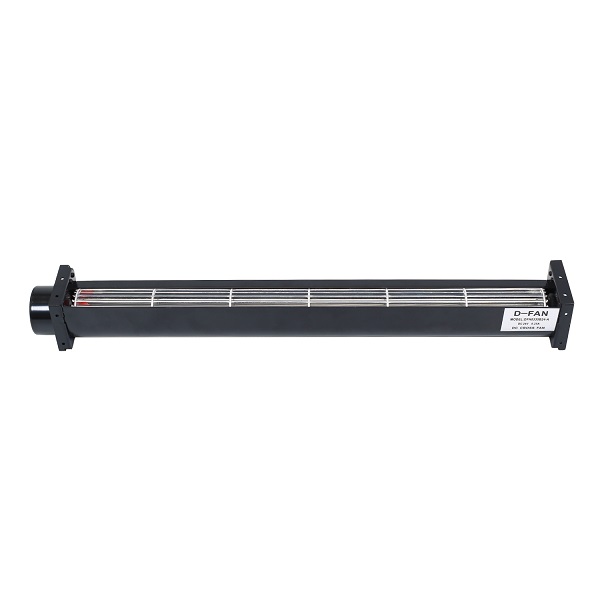With the advancement of technology, the technology and performance of cooling fans are also constantly developing and improving. At present, the specifications and dimensions of heat dissipation fans range from a few millimeters to several hundred millimeters, and there are various voltage options, such as 5V, 12V, 24V, etc. In addition, there are also various shapes of heat dissipation fans, such as square, circular, olive shaped, etc.
In modern home life, technological progress has not only changed our way of life, but also improved our quality of life. The emergence of smart toilets is undoubtedly a major innovation in the bathroom field. They are equipped with heating seats, warm air drying, automatic flushing and other functions, making users feel extremely comfortable during use while effectively reducing the risk of infection caused by unclean bathroom facilities.
In the fast-paced modern life, the emergence of dishwashers has brought about earth shattering changes in our home life. Washing dishes is a tedious and time-consuming task that requires us to personally clean every dish, dry it, and store it in the sun.
The emergence of drones has provided us with new ways and perspectives to understand things. In the past decade, their applications have become increasingly popular. The express delivery industry, film and television shooting, monitoring and inspection, transportation, agriculture, forestry, police security, surveying and mapping, and other fields have shown a significant increase in demand for drones.
Date: 2024.04.12
View: 814
In the ever-evolving world of thermal management and cooling technologies, the quest for more efficient, reliable, and versatile solutions is perpetual. Amidst the myriad of cooling solutions available today, cross flow fans emerge as a standout choice for a wide array of applications. This article explores the unique advantages of cross flow fans, particularly DC cross flow fans, over traditional cooling methods like axial fans, highlighting why they represent an innovative solution in today’s cooling challenges.
Cooling technologies play a crucial role in a broad spectrum of industries, from electronics and automotive to HVAC systems and industrial machinery. The primary types of fans used in these cooling systems are axial fans and cross flow fans, each with its distinct characteristics and advantages.
Axial fans are perhaps the most common type of fans used in cooling systems. They operate by pushing air in a direction parallel to the shaft around which the fan blades rotate. Known for their efficiency in moving large volumes of air, axial fans are often the go-to choice for general-purpose cooling needs. However, their performance can be limited when it comes to targeting specific areas or equipment with a uniform flow of air.
Cross flow fans, on the other hand, offer a different approach. Their design allows air to flow through the fan blades in a path that’s perpendicular to the fan’s rotation axis, creating a wide, uniform airflow. This unique airflow pattern is particularly beneficial for cooling elongated areas and surfaces with minimal noise and energy consumption.
Cross flow fans bring several innovative advantages to the table, making them a preferred choice for various applications.
One of the standout features of cross flow fans is their ability to deliver a consistent and uniform air distribution across a broad area. This is particularly advantageous in applications where even cooling or ventilation across a wide surface or space is critical.
Thanks to their elongated design, cross flow fans can be integrated into slim and compact devices, offering significant space efficiency. This design flexibility opens up new possibilities for cooling solutions in tightly constrained spaces, where traditional axial fans might not be feasible.
Cross flow fans are engineered for quiet operation, making them ideal for environments where noise reduction is paramount, such as in residential HVAC systems or office electronics.
DC cross flow fans represent a significant advancement in fan technology, combining the inherent benefits of cross flow fans with the efficiency and control offered by DC motors. These fans are particularly suited for applications requiring precise airflow control, low power consumption, and minimal operational noise.

DC motors are known for their high efficiency and low power consumption, making DC cross flow fans an energy-saving solution for cooling and ventilation needs.
The use of DC motors allows for precise control over the fan speed, enabling the optimization of cooling performance and noise levels according to the specific requirements of each application.
From cooling electronic equipment to providing ventilation in automotive and HVAC systems, DC cross flow fans offer a versatile solution that can be tailored to meet the diverse needs of various industries.
While axial fans have their merits, especially in situations requiring the movement of large air volumes, cross flow fans offer distinct advantages in terms of uniform air distribution, space efficiency, and noise reduction. The addition of DC technology further enhances the appeal of cross flow fans, providing superior control, efficiency, and adaptability.
Axial fans are known for their ability to move air effectively over long distances. However, their design can limit their effectiveness in providing uniform cooling across wide or specific areas. Additionally, the noise level and energy consumption of axial fans can be higher compared to DC cross flow fans.
DC cross flow fans address many of the limitations of axial fans, offering a more targeted and efficient cooling solution. Their ability to deliver a uniform airflow, combined with the benefits of DC motor technology, makes them an innovative solution for a wide range of cooling challenges.
The evolution of cooling technologies has led to the development of more efficient, versatile, and user-friendly solutions. Among these, cross flow fans, particularly DC cross flow fans, stand out as an innovative option for addressing the complex cooling needs of today’s applications. With their unique advantages over traditional axial fans, including uniform air distribution, space efficiency, quiet operation, and enhanced control and efficiency through DC motor technology, cross flow fans represent the future of cooling solutions.